A couple of months back, Erik Henry walked us through the visual effects craftsmanship of the second season of Invasion. Today, he delves into his experiences working on Percy Jackson and the Olympians, discussing the many challenges he encountered.
How did you get involved on this series?
I got involved with Percy Jackson because I had been working for more than a decade with the show’s creators. We had done Black Sails together and were in the middle of shooting The Old Man for FX when they asked me to join the team for Percy.
How was the collaboration with the showrunner and the directors?
My collaboration with the showrunners and directors was super smooth. We all bought into the idea that to be successful the show needed not to be too scary for the little kids while also being real enough that adults would be intrigued. The VFX team adopted that principle when making the monsters throughout the season. The Minotaur has just a hint of Teddy Bear to it.
How did you organize the work with your VFX Producer?
I’m lucky enough to have a stellar VFX Producer in Matt Robken. He and Amanda Newby Fitzgerald would take care of literally everything except the collaboration with the show’s creatives. This gives me the time to stay close to the art department, DP and all the creatives without having to worry about tax credits and the like.
How did you choose the various vendors?
One of the things the three of us did was vetting various companies for their creature capabilities, and for who was still at the particular house that worked on the shots we liked. Then the next step was to play to strengths at each house. MPC in London got the Chimera in episode 104 while ILM did the Minotaur, Cerberus and Medusa. Both companies worked on the winged Furies. When it came to the Nereid, an underwater creature, we had seen a demo of an underwater sequence that showed great promise from the VFX house MARZ in Toronto. When we found that shooting an actress underwater was going to be impossible we hired MARZ to create the Nereid completely in 3-D and used an actress to voice her. Environment work was given mostly to our longtime collaborators, Raynault VFX in Montreal and Storm Studios in Norway. Their eye for detail is essential for our grounded and realistic ideals.
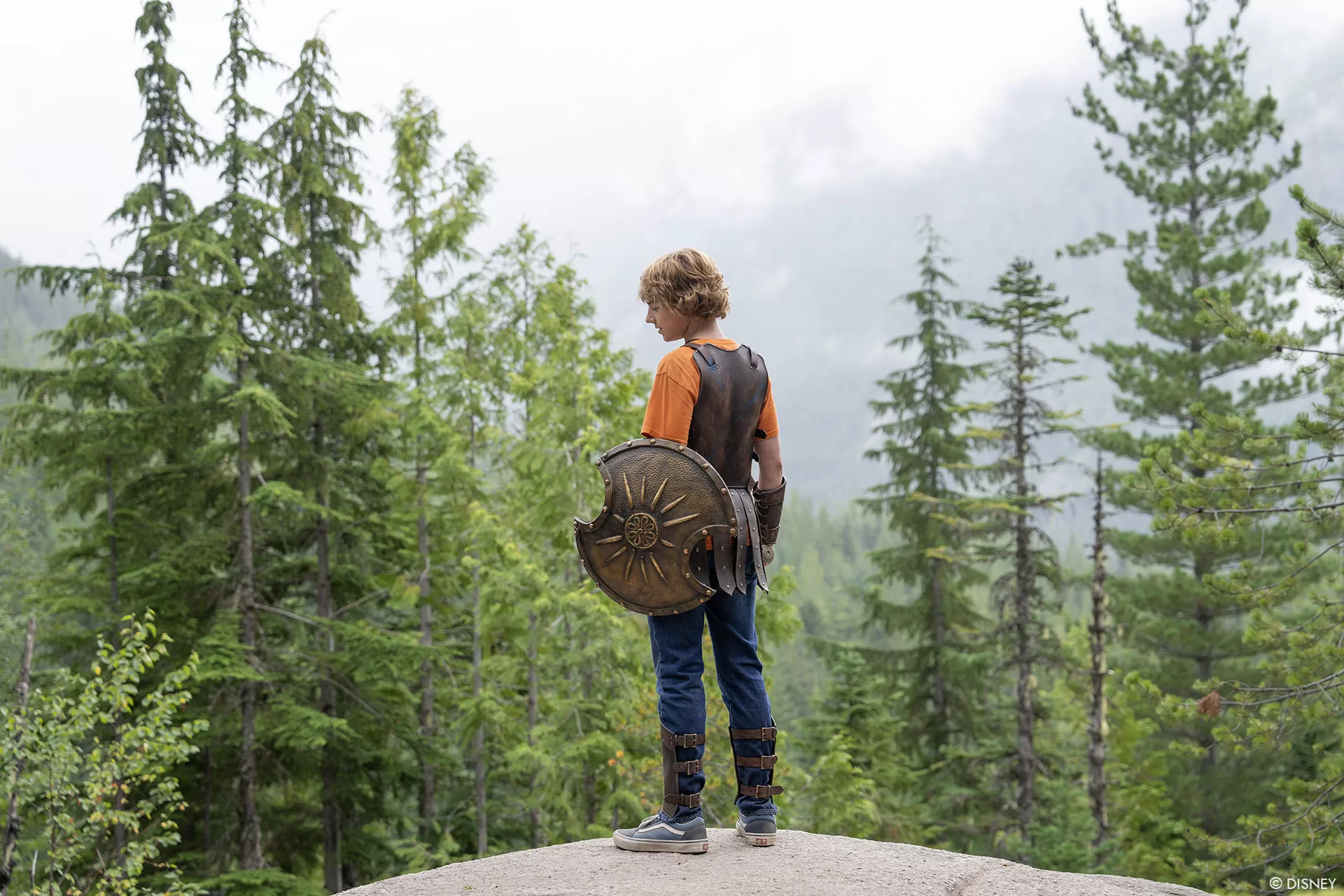
Can you take us behind the scenes to create the visual effects for the mythological creatures, such as Medusa and the Minotaur?
A little behind the scenes of making Medusa – The show’s creators had a very important directive for Medusa, no silly snakes looking at camera! In fact they believed, rightly, that snakes generally move very slowly and therefore the snake ‘hair’ should exhibit very small slithering movements at most. We looked at all the scenes and felt we could possibly come up with a cost effective 2-D approach to the majority of shots and let ILM tackle a small subset of very hero moments where the snakes needed to perform. Storm took on the 2-D approach. Using warps and the highlight augmentation, we were super happy with what looks like undulating snakes under a hat the actress wore. For ILM’s work the actress wore a trackable tight fitting cap that kept her hair pulled up and out of the way. The snakes were modeled with a bit of variation in girth with the larger ones animated to move more slowly than the smaller finger thick snakes. variations in color were added to help differentiate the otherwise black mass. One shot had two snakes hiss and snap at each other, for that the animation team watched hours of real snakes, an iconic scene from « Indiana Jones », and even pulled from the expertise of those who worked on « Snakes on a Plane! » When we felt we were close the studio head asked if we could add some eye fx to subtly add that final x-factor. This was accomplished in the color suite where our color timer tracked the eyes in each shot and subtly added a slight colored glow (very slight) that pushed Medusa over that final edge from woman to creature!
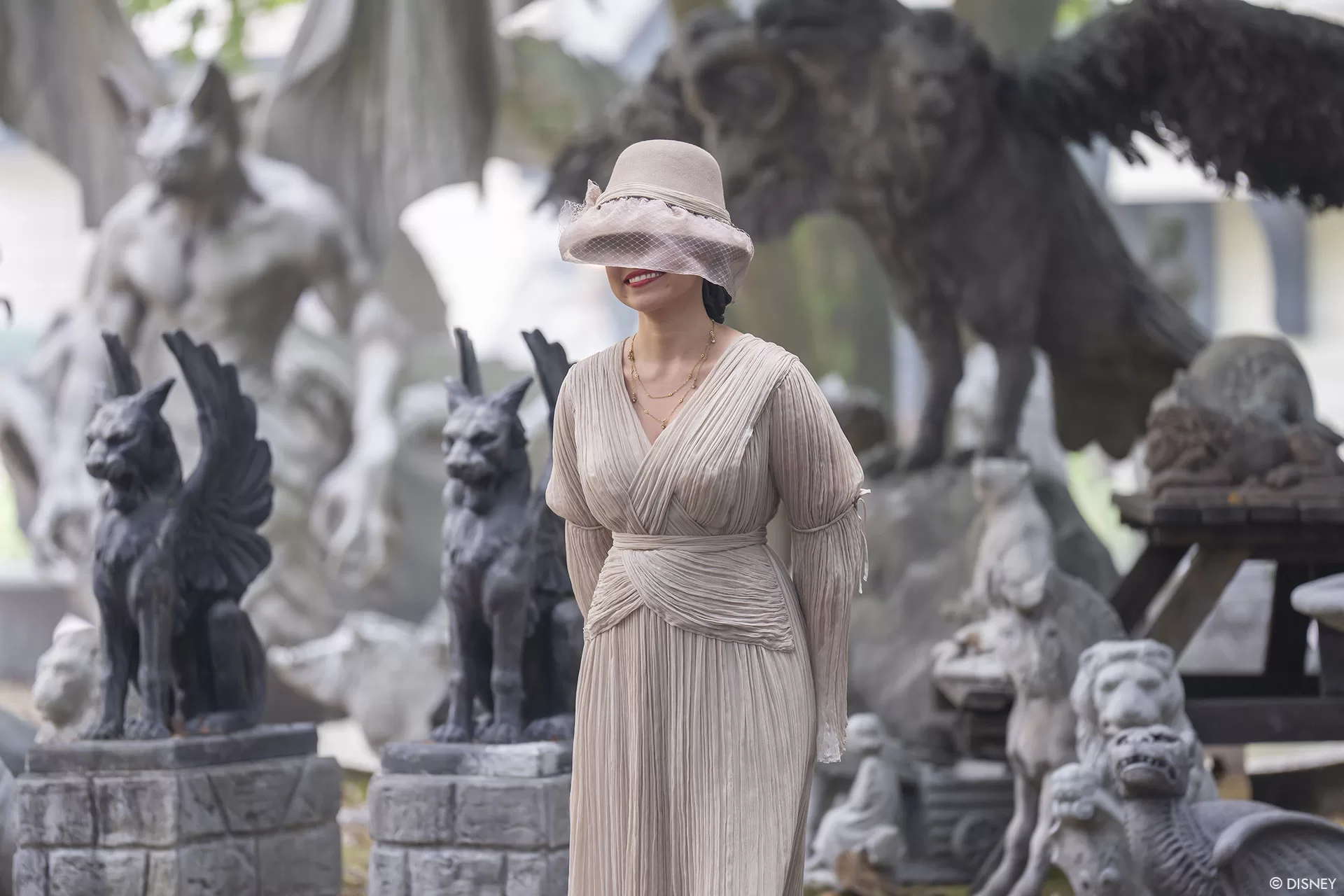
What sources of inspiration did you use to bring such iconic mythological creatures to life on screen?
With the Minotaur we saw an opportunity to do something different in that we wanted it to look more bull-like than man. We also like the white and grey bulls we saw in our research but wanted to give it some back story. We added earrings and braided hair in order to give it a sense of individuality that we had never seen in other iterations throughout its history. We had the extra challenge of needing to have the actor climb on and interact with the monster. Our SPFX team helped by building a motion based fullscale blue Minotaur gimbal complete with fur, and with the help of the costume department, a custom pair of tighty-whitey’s! The fur helped our actor hold on in the torrential rain as we had the motion based buck and whirl and the underpants provided a key moment of comedy mixed into the danger. The scene was the big climax for the pilot episode so it was a make it or break it moment and we knew this monster had to be special. Early on we decided that bulls are most dangerous when they run at you on all fours. We decided our bull-man would stay on all fours as well, until a key moment when he stands to his full height and scares the hell out of Percy. We also loved the idea of having hooves break open into fingers as the monster rose up, super creepy! At the same time we struggled as we approached final on several close ups because the showrunners thought the face was getting too Zombie-like and therefore too scary for a segment of our audience. ILM smoothed some shapes and adjusted how we saw the teeth (yes we decided this bull-man needed to have a full set of teeth, bulls do not), and that seemed to work! The climax is that Percy snaps one of the Minotaur’s horns off and plants it into the beast’s head. As the Minotaur dissolves into dust Percy falls to the ground. For this we suspended the actor from the volume floor and SPFX used a descender rig to drop him for real. In post we found the animation of the Minotaur and its dust sim, requiring us to transition to a digital double of Percy to have him interact more appropriately with that simulation and displace it correctly and seamlessly.
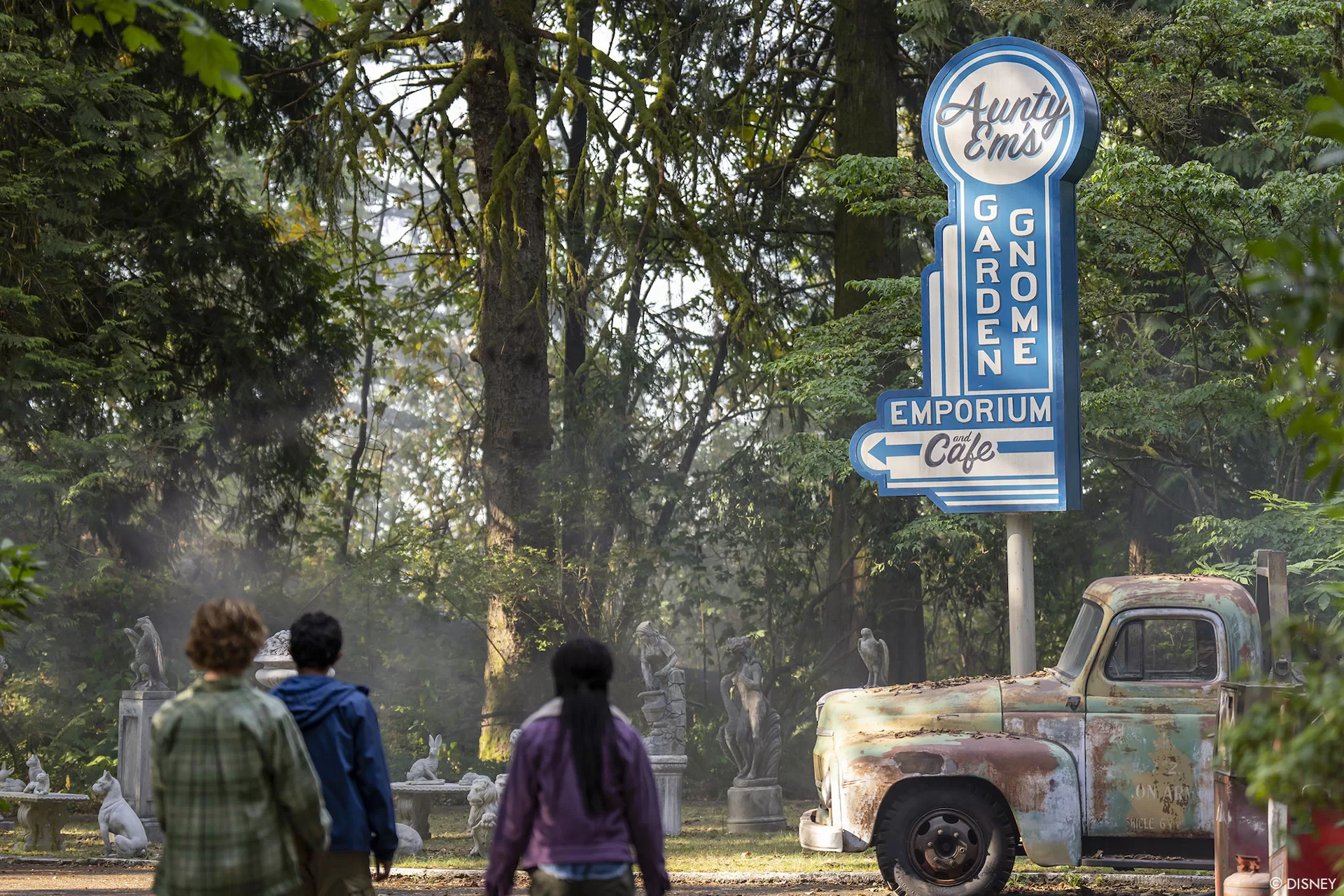
What were the main challenges in designing visual effects for mythological creatures, and how did you overcome them?
When designing the mythological creature for the show we always had Rick’s books for inspiration and Rick for guidance. He was a constant for us, always there to let us know what he intended. That was so valuable. It helped us understand how Chiron would dress when in his Centaur form and described the mashup that is the Chimera. The three-headed Cerberus was a special challenge because of its size. Thirty foot tall dogs have been done before and we knew we had to think of ways to make this better than in the past. To overcome the challenge we started by saying, what this needs is a little humor so the audience is with you from the start. The writers came up with the idea that Annabeth would use an old trick that works on pretty much any dog, scratching behind the ears to immobilize them in bliss. We set to work on a pre viz and when I brought it to the guys they laughed and said « are we really going to do this? » And next said they wouldn’t change a frame! so we shot it pretty much exactly like the pre viz with other silly parts including Grover being eaten by the dog and then climbing out of its stomach, and of course using a red squeaky ball to distract and send it away! The sequence is shrouded in fog not in any attempt to hide anything, more to reveal the dog at key moments and have you guessing where the threat is hidden throughout the scene.
How did you manage the balance between using digital visual effects and practical effects?
I’m always interested in doing things practically when possible, especially when it comes to fire. In episode 104 the Chimera tries killing Percy by burning with its fire-breathing capabilities. I asked Joel Wist, our SPFX supervisor if he could help and he was too happy to jump in with flame throwers! The idea was to paint the full scale set black after we finished shooting the first unit work. Next we added fire retardant and placed the cameras behind transparent barriers then Joel let it rip. We did end up combining a little CG fire in post but the overall result is a composite that feels so much more real than if we had settled for just a digital solution.
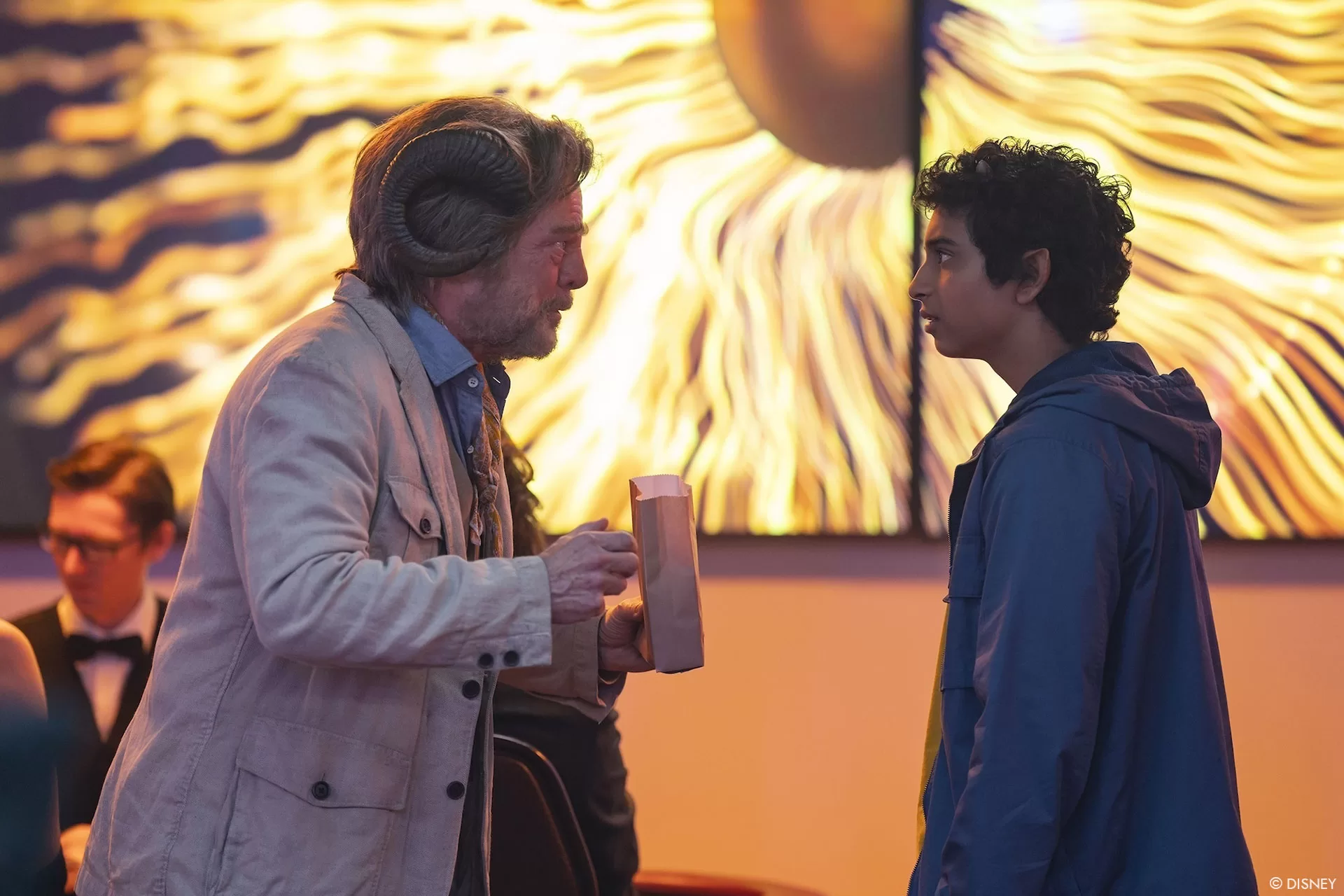
Which sequence or shot was the most challenging?
The challenges associated with extending sets. We had many set extensions for Camp Half-Blood that did require a deep think in post. We had one panning shot that really took in ALL of the world the kids train in each day. On the day we had a strawberry field and a fighting arena and the deal with the art department was VFX would add the rest. « The rest » became an interesting challenge after I showed the guys the first pass for the environment. It became clear it was not nearly enough. So we went into fan sites and again relied on Rick to help us. What we found was many ideas pulled from many books where fans and Rick had added tidbits that we thought could be visually arresting. I asked the team at Raynault to add a volcano, a waterfall, a lake and many things that, while not played out in this season, would become important in other subsequent seasons. We also had a big challenge in the Underworld where the sets were on a large scale but the finished comps would need to be on a monumental scale. The DP was super helpful in that he created a soft ‘sky’ to the studio ceiling that we were able to cover with our idea that the underworld was a huge god-created cavern with inverted mountains and an interesting alluvial flow of black on a field of white. It was a really good collaboration that paid off in that I’ve never seen anything like it. I hope the audience is also struck by the uniqueness.
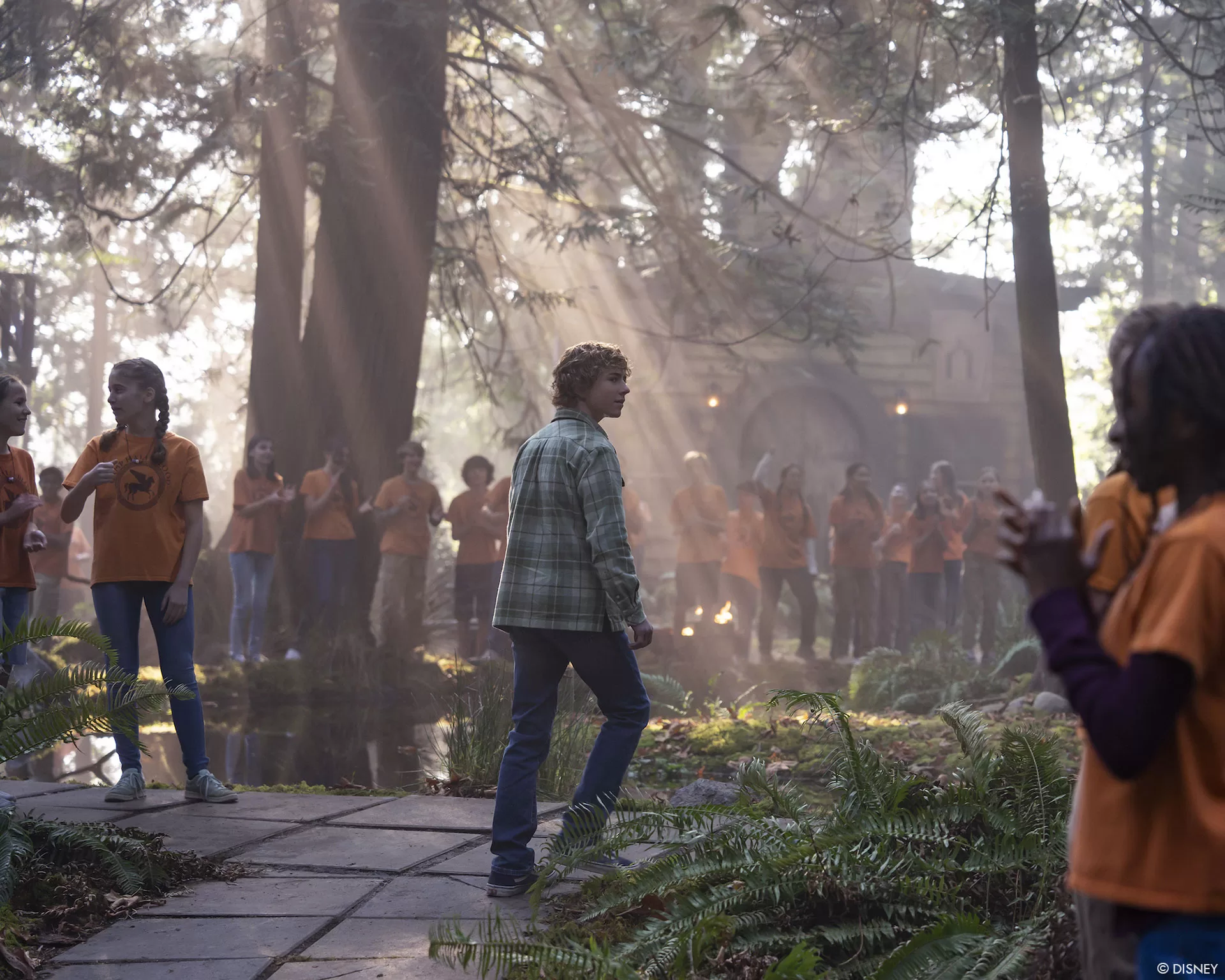
Is there something specific that gives you some really short nights?
One of the most challenging scenes was the Dodds transformation into the Alecto fury. The challenge was that the actress, who was wearing a long leather coat, would have to turn that coat into a set of wings while we watched. In the end we had to work with two different companies to get to a place we were happy with the result. The simulation of the leather coat to wings was helped tremendously by adding live action extra crosses pulled from multiple takes and ROTO’d / color adjusted to fit into the FG. This worked because the scene was already filled with people and the addition of these crosses actually helped the sort of surrealistic moment that Percy finds himself in where no one around him sees what we see with him. The end effect was to give almost a sight of hand to the scene where you aren’t quite sure what’s changing from moment to moment, something the showrunners had hoped for from the start!
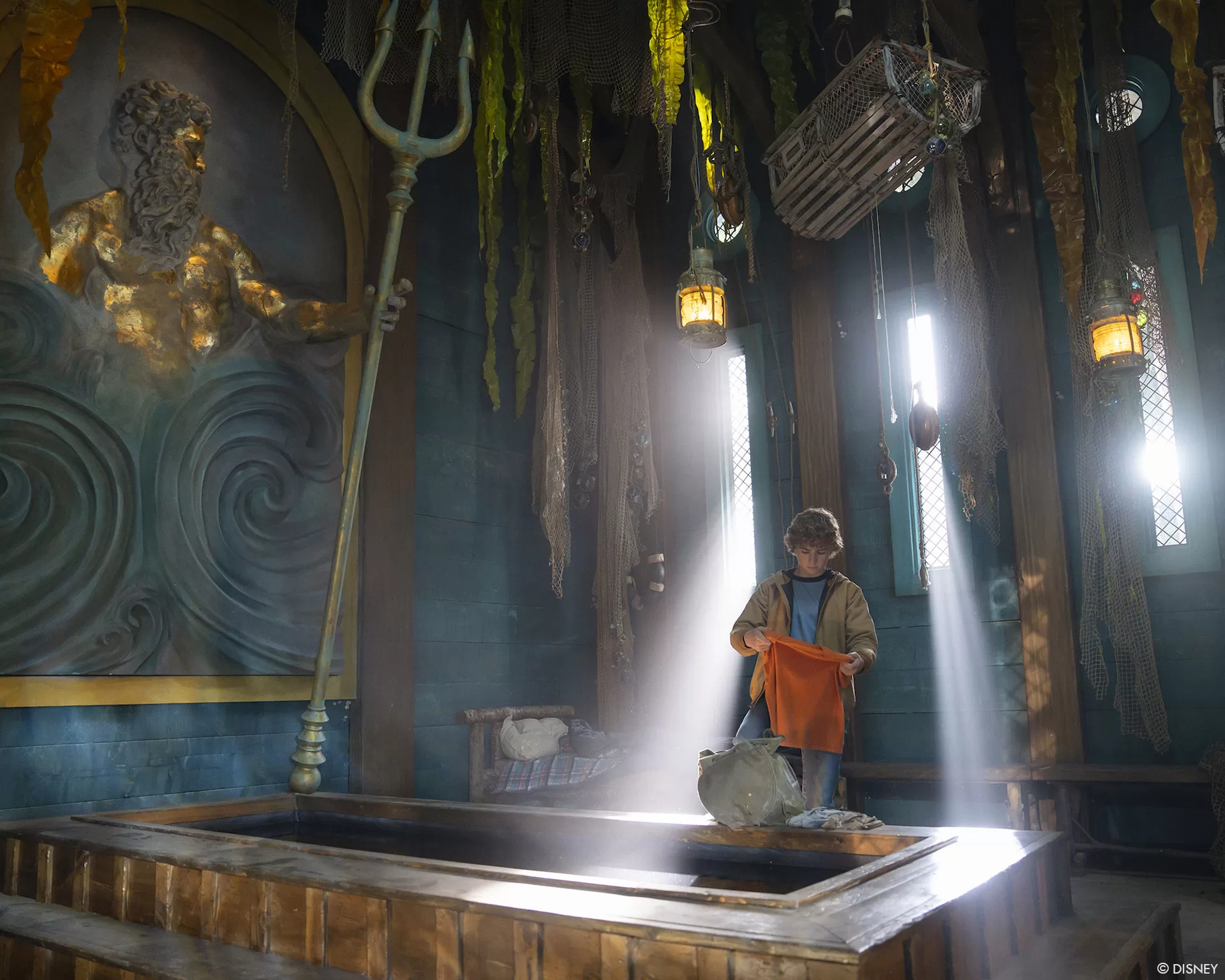
What is your favorite shot or sequence?
The Minotaur sequence was the sequence that gave me some sleepless night because, as is sometimes the case with the first sequence you work on, you spend way too much time on it! We worked on the Minotaur for the better part of a year to get it just right and it was right down to the last hours to get the final shots into the episode.
What is your best memory on this show?
I remember one night we were working late looking at final color on episode 107 when Dan Shotz, one of the executive producers got a Facetime call from our main actor Percy (Walker Scobell) and the actor who plays Grover (Aryan Simhadri). They were hanging out together and thought it would be fun to call Dan. He pointed the phone at the color suite screen and we played through the sequence where Percy and Grover come over a rise and see the huge Tartarus hole in the underworld. The actors had never seen anything other than the stage floor and some blue screens on the day so it was super gratifying when they both gasped involuntarily and said how incredible it looked. I knew we were in a really good place then.
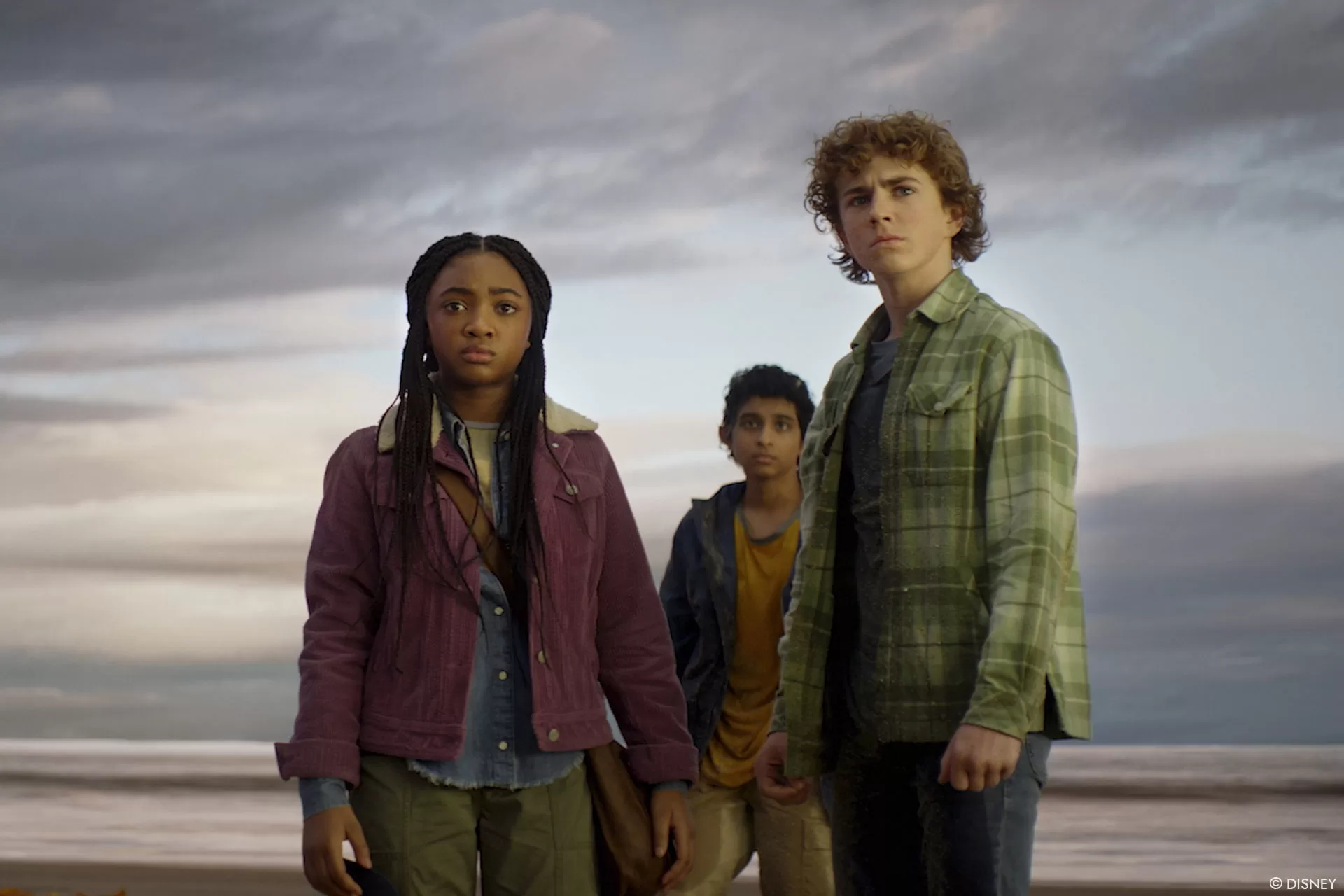
How long have you worked on this show?
I worked on Percy for 3 years.
What’s the VFX shots count?
1800 shots.
A big thanks for your time.
WANT TO KNOW MORE?
ILM: Dedicated page about Percy Jackson and the Olympians on ILM website.
Disney+: You can watch now all the episodes of Percy Jackson and the Olympians on Disney+.
© Vincent Frei – The Art of VFX – 2024






